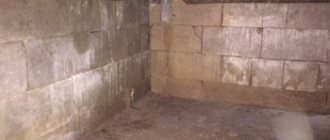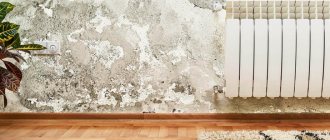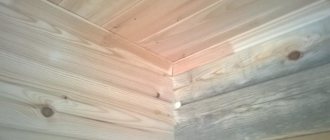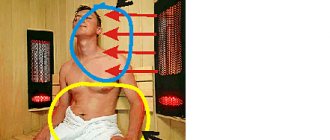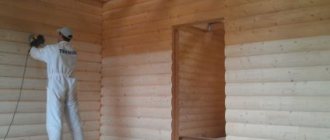- March 26, 2019
- Walls
- Marina Lobacheva
For various reasons, fungus may appear on the walls of an apartment. Its spores are dangerous to the health of every person. It is impossible to get rid of it with a standard wash, so you have to resort to some drastic and complex methods. Therefore, anyone who finds spores on the walls of their apartment should understand how to remove fungus from the walls so that such a problem does not arise again in the future. To do this, you can use different technologies and means.
When does fungus and mold appear?
- Most often, fungus on the walls is the result of increased moisture in the apartment.
- Poor ventilation and excessive coolness can also lead to the formation of mold in a house, apartment, balcony, etc.
- Often mold appears on the walls when the apartment is located at the end.
- If metal-plastic windows are installed in the house, this problem may also arise due to the creation of a kind of vacuum in the house and disruption of air microcirculation.
Fungus on the walls appears on the wallpaper and ceiling in the form of spots of black, green and yellow. Typically, we begin eliminating mold when the damage is severe, although the fungus appears long before that.
More often, mold forms in winter, and if you dry clothes in a house with poor ventilation, then mold will definitely appear.
Causes of fungus
Mold survives even in extreme conditions, so it can be difficult to completely get rid of. It most often forms in places with high levels of humidity, but it can appear even in a warm and well-ventilated apartment. In this case, the spores are in the air, settling on furniture, walls and other surfaces of the room. Then they multiply quickly, which is dangerous for people living in this room, so it is important to know how to remove fungus from the walls.
The main reasons for the appearance of fungus include:
- the room has a high level of humidity;
- During the construction of a residential building, cheap materials were used, which led to freezing of the walls in winter;
- the construction of the house was carried out by non-professionals, so they violated construction technology or some significant standards;
- Condensation occurs on plastic windows every day;
- the residents of the building insulated the windows in violation of certain rules;
- there is no ventilation system in the room;
- the presence of damp basements in an apartment building.
Initially, the property owner must determine the cause of the dispute, since if it is not eliminated, the fungus will still appear periodically on the walls of residential premises. The most common cause is excess moisture, which needs to be removed quickly. This often requires complex construction work. Only after this can you use various remedies against fungus on the walls.
What can mold cause in your home?
It doesn’t matter whether you live in a wooden house or a brick one, the appearance of fungus in any type of premises has a negative impact on people’s health. What are the harms of mold?
- Development of allergic reactions.
- Decreased immunity.
- Headache.
- Exacerbation of chronic diseases of the bronchopulmonary system.
- Upper respiratory tract diseases.
Fungus in a child's room is especially dangerous, because the child's body is still developing and cannot resist at full strength. As a result, serious diseases such as asthma, urticaria and others can develop.
Fungus on the ceiling and concrete walls spoils the entire interior, because these stains can appear on the tiles in the bathroom, toilet, kitchen, or on the wallpaper, on the balcony, and even in the basement. Mold spreads quickly, and combating it must begin immediately.
Ammonia
Another remedy for fungus on the walls of a bathroom or other room is ammonia. Its characteristics are similar to bleach. It is advisable to use it if there is fungus on any solid and non-porous substrates. If the walls are made of foam blocks, then it is advisable to choose some other solution to eliminate mold spores.
Most often, ammonia is used when fungus is detected on a tile or glass surface. To use it, you need to mix it with water in equal proportions. It is advisable to spray it over the surface and then wait about one hour. Next, the product is washed off and the room is thoroughly ventilated. The work should be done carefully, as alcohol has a strong and pungent odor that causes dizziness, headaches and other unpleasant symptoms.
Remedies for mold and mildew on walls
Today you can find a number of special preparations in stores, and you don’t have to think about what to treat the walls with. If processing is carried out during construction and repair work, use the following means:
- Dali;
- Biotol;
- "Fongifluid fungicide";
- "Olympus Stop"
These mold removal compounds are used on floors and walls and are effective and non-toxic.
If the problem arose after the house was built and repaired, use:
- Denkmit Schimmel-Entferner;
- Anlas mykos;
- Savo Przeciw Plesni;
- "Antisept";
- "Abedis."
When choosing a composition, pay attention to the surfaces for which the mold repellent is intended and make a purchase in accordance with the type of material to be treated.
Choosing an antiseptic primer
The most effective method of combating mold is the use of a primer that has the necessary properties. Antiseptic for walls against mold and mildew allows you to quickly get rid of the problem, but you need to use it carefully. The procedure is carried out only in a ventilated area and with the use of protective clothing and a respirator. After completing the process, you need to wait a few days before moving into the property.
Antiseptics can be presented in different forms, so people are often faced with a difficult choice. The most popular product is Fongifluid Alpa. It is sold in many hardware stores, and also allows you not only to eliminate the fungus, but also to prevent its reappearance. Additionally, the Olympus Stop Mold product is often purchased. It must be applied in two layers, and it can be used even in particularly damp rooms, such as basements or cellars.
Features of using these funds include:
- they are sold ready-made, so they are very easy to use;
- applied to the contaminated surface with brushes or a spray;
- Before application, it is important to properly prepare the walls, which need to be freed from finishing materials and thoroughly cleaned.
Immediately after this professional product has dried, you can begin finishing the surfaces, so there is no need to repeat the procedure several times.
How to deal with mold on walls
If the fungus affects surfaces covered with wallpaper, and the attack has spread widely enough, they will have to be removed. Treatment of walls against mold is carried out in stages and it is necessary to adhere to the following procedure:
- Remove old wallpaper from the walls.
- Clean off the lesions using a spatula and a stiff brush.
- Apply to the surface a special composition designed to remove residual adhesives and cement films.
- Treat the walls with an anti-mold compound following the instructions for use.
- Apply a primer with an antiseptic effect.
- Use a waterproofing compound.
- Apply antifungal primer again.
- Plaster the walls.
- Paint the surfaces with a special heat-insulating paint.
- Perform final putty.
- Re-treat the walls with primer before wallpapering.
Only after this can you start updating the room and gluing new wallpaper. But if the degree of fungal damage is not so great, such radical measures are not required. Treating surfaces with folk remedies will also help if mold on the wall in the apartment appeared relatively recently.
To get rid of mold, you will need to remove the wallpaper. Why? Without these measures, the use of chemical or folk remedies will be pointless. Antifungal agents are not difficult to find in your own home, these include:
- Table vinegar or essence.
- Any household chemicals containing chlorine.
- Manganese solution.
- Ethyl or ammonia.
- Hydrogen peroxide 3%.
The listed products will help remove fungus only on the wallpaper. If you want to solve the problem permanently, you should carry out more thorough work. Copper sulfate, used to treat walls, ceilings and other surfaces in the house, effectively helps fight mold.
Surface cleaning
The fight against fungus on walls begins with proper cleaning of the base. To achieve this, the property owner implements the following steps:
- Initially, the surface on which there is fungus is thoroughly cleaned with a metal brush and spatula;
- this area is then washed well with warm water, and during the procedure it is necessary to wear a respirator so that spores do not enter the lungs, as this can cause bronchial asthma;
- if the process is carried out in the bathroom, then usually the mold has to be cleaned out from the seams between the tiles, so you need to make sure that the coating fits tightly to the base, since sometimes the fungus leads to the destruction of building materials that will need to be replaced;
- Wallpaper from the affected areas must be removed, for which it is initially moistened and then scraped off with a metal spatula;
- stripping must be carried out to the concrete base;
- small roughness can be easily removed with sandpaper;
- if there are really significant lesions, you will have to completely remove the layer of plaster.
Sometimes during work it turns out that black mold has affected not only the walls, but also the ceiling of the room. In this case, cleaning and processing will have to be performed on all surfaces of this room. Removed wallpaper, plaster, ceiling coverings and other materials covered with spores are promptly thrown away. After this, the room should dry well, for which it is advisable to turn on the heat gun or heating if you have an autonomous boiler.
Only after completing all the preparatory steps can you resort to using various means to remove fungus on the walls in the apartment.
Copper sulfate for mold and mildew
How to prepare the surface for processing
Before treating the walls with copper sulfate, you should prepare them. But first of all, remove everything unnecessary from the room: furniture, linen, household appliances and more.
Carefully inspect everything removed for the presence of mold. She can hide on the legs of the bed and sofa, on the back wall of the closet and its bottom. Things need to be disinfected. Otherwise, they may be a new source that will re-infect walls and other surfaces. And you will have to carry out all the processing and disinfection manipulations again. To prepare the walls, do the following:
- First you need to find the main source of mold. It can be in the most difficult to reach places, for example, under tiles. You need to tap the tiles; if there is a void underneath, it is likely that there is fungus there. In such areas it is better to remove the tiles. Mold can also hide under the wallpaper. They will have to be removed too.
- After mold is found and the walls are cleared of tiles, wallpaper and other coverings, begin cleaning. Take a metal spatula or stiff brush and remove all plaque. Then go over again with low-grit sandpaper.
- Next, wipe all the walls with soapy water and wait until they are completely dry. This will make treatment with copper sulfate more effective.
How to dilute copper sulfate to treat walls against mold
Copper sulfate is available in dry form, so it is diluted in water. You need to take 100 grams of blue powder and pour it into a metal container with 10 liters of water. The water should be warm. Mix the granules well in the water until they are completely dissolved.
How to treat walls against mold with copper sulfate
Pour diluted copper sulfate for wall treatment into a spray gun or spray bottle. Apply thickly to all affected areas. If you don't have a spray bottle, use a regular kitchen sponge. After 3–5 hours, copper sulfate should be sprayed again against mold in all treated areas.
This treatment is carried out 2 to 5 times. It all depends on the depth of mold damage to the walls. In the most advanced cases, it is necessary to remove a layer of plaster before treatment.
The product will dry completely only after 2-3 days. Limit your time in the contaminated room to a minimum.
Safety precautions when using copper sulfate
- Wear thick rubber gloves, a respirator or cotton-gauze bandage, safety glasses and special clothing. Tight, closed clothing with long sleeves is suitable.
- After disinfecting surfaces and walls, ventilate the room well.
- Clothes used for treatment should be washed separately from other laundry and dried in fresh air.
- If you experience slight malaise, dizziness, headache, nausea or allergic rashes, consult a doctor immediately. These may be signs of poisoning.
Safety precautions when working
When processing the premises, it is worth using personal protective equipment - rubber gloves, cotton-gauze bandages or pharmaceutical masks, respirators. It is better to wear glasses on your eyes when using caustic solutions. It is recommended to carry out all work wearing thick protective clothing.
After finishing the treatment of the walls, you need to thoroughly ventilate the room, wash the clothes, and throw away the rags and sponges, packing them in a bag. If allergies, nausea, or vomiting occur, you should consult a doctor - this may be a sign of intoxication.
Chlorine bleaches
Sodium hypochlorite is found in many bleaches and is an effective mold and mildew killer. You need to prepare an aqueous solution in a ratio of 1:10 and treat the affected surfaces, first removing any pockets of fungus.
Keep in mind that bleach vapors are poisonous; work with open windows, protecting your face with a medical mask and the skin of your hands with gloves.
General operating principle
The specifics of the manipulations are distinguished depending on in which room - residential or non-residential, warm or cold, ventilated or not - the infection occurred.
The following are considered mandatory:
- complete removal of the affected layer of material;
- treatment after mechanical cleaning with antiseptics;
- Complete drying and ventilation of treated surfaces before new finishing.
All work is carried out in personal protective equipment! Before mechanical cleaning, the surface is wetted - this will prevent mold spores from spreading with dust throughout the rooms.
How to get rid of mold on the walls of a room
Often during cosmetic repairs, mold fungi in the form of a scattering of dark spots or gray-black spots are found under the removed wallpaper or cladding. This is due to the fact that for one reason or another the humidity in the room was increased, and with relatively warm air the walls remained cold. The condensation that formed on them was “hidden” under the wallpaper, cladding or plaster. In this case, there was a “nutrient medium” in the form of wallpaper glue, organic components of plaster or a base for cladding.
What to do:
- completely remove the old finish. If there is mold on the walls, it is almost certainly present under the floor and ceiling coverings, in secluded places under the windowsill, behind the radiator, under the baseboards and threshold;
- identify all affected areas and the depth of the affected layer. To do this, it is necessary to knock the base plaster off the surface in several places and check how deeply the mold mycelium has penetrated. The depth can reach 5...10 mm, depending on the density of the material;
- clean the surface mechanically (with a brush, a special attachment for an angle grinder or drill, sandpaper, or a grinder);
- treat cleaned walls with an antifungal agent;
- perform a new finish after the surfaces have completely dried.
Deciding which product to use against mold and mildew on the walls of an apartment should depend on whether the room will be used as a living space and what kind of finishing will be used.
Ceilings and monolithic floors under covering
The same sequence of actions is used here as when processing walls. The only difference is that it is much more difficult to remove the finish from such surfaces, and creating it anew is more expensive and time-consuming.
Important: you cannot install new coatings after only slightly removing visible elements of the damage! Under a new suspended ceiling or laminate flooring, mold will grow even faster and more extensively!
Secluded places
These include hard-to-reach corners in the seams between facing tiles and panels, places under thresholds, window sills and baseboards, boxes for wiring and communications. Since it is difficult to reach such corners with large mechanized tools, it is better to use hand-held metal brushes, chisels, miniature cutters and abrasive attachments.
Particular attention is paid to the seams between the tiles and facing panels. Here you need:
- wash the surface of the cladding with active detergents (Domestos, Belizna and analogues). This will help you figure out where the dirt is, where the mold is;
- remove the grout between the cladding elements. It is advisable to do this with a special tool;
- treating the space between the tiles with a concentrated antiseptic;
- new seam sealing.
Important: an antiseptic against mold and mildew for the bathroom and kitchen is chosen that is as harmless as possible to the health of people and pets. High humidity in these rooms will lead to the evaporation of harmful substances and damage not by fungus, but by toxins.
How to get rid of mold smell in your home
When mold has already been defeated, its specific damp smell often remains. To get rid of it quickly:
- thoroughly ventilate the rooms;
- purchase special odor absorbers;
- cover the affected areas with soda or charcoal, and after a while remove the composition with a vacuum cleaner.
If the odor persists, check that all affected areas have been noticed and treated. If necessary, carry out additional cleaning of surfaces.
How to get rid of mold on the balcony
Fungus appears on the walls on the balcony more often than indoors. Wet weather conditions, leaking roofs and drains allow fungal spores to spread at a high rate.
- As a preventative measure, you should think about insulating the balcony, waterproofing it, and an air circulation system.
- Special primer solutions will help prevent the appearance of dampness.
- You can remove mold on a wooden balcony and prevent its occurrence using special antiseptic solutions. But their use can be harmful to the body; during treatment, think about personal protective equipment.
- If mold does appear on the balcony, it should be dealt with immediately. You can use special antifungal agents, but disinfection must be carried out first.
On wooden balconies and concrete walls it is better to use copper sulfate. To prepare a special antiseptic solution, take:
- Copper sulfate 100 grams.
- Vinegar essence 4 tbsp. spoons.
- Warm water 10 liters.
Combine all the components together, you should get a homogeneous solution, which should be heated to 70 degrees. Using a hot product helps kill all fungal spores, but after 30 days it is better to repeat the treatment.
Prevention measures
The best prevention of fungus is to maintain cleanliness and prevent dampness. Ventilation valves must be installed on double-glazed windows, and ventilation must be installed in bathrooms and kitchens. It is important to insulate freezing walls, and in a private house to build a strong foundation and blind area. You need to check the plumbing: there are no leaks or breakdowns, otherwise fungus will inevitably settle in the bathroom.
If the air is too humid, uniform heating and installing an air conditioner to dry the air help. Reduces the risk of mold by drying clothes on the balcony rather than in the apartment, regularly using a kitchen hood, and frequently washing areas where mold may appear with antiseptic agents.
Preventive measures against mold
In order for mold to leave your home forever, it is necessary to destroy the environment favorable to it. The rules are quite simple, by adhering to them, you can finally and irrevocably get rid of the problem:
- It is important to regularly ventilate the room. Air movement will prevent mold from surviving. The ideal option is to air three times a day for at least half an hour.
- Control the humidity in the apartment. Buy a special device called a hygrometer - a device for measuring air humidity. The optimal humidity in residential areas is 40–60%. If the readings are higher, warm up the room. Turn on the heater. Candles will also work, but you will need quite a lot of them, and such drying will also take more time. Try not to dry washed clothes indoors; when cooking, cover pots and pans with lids to prevent steam from spreading throughout the rooms. Avoid keeping flowers that need to be watered frequently. Also, if humidity is high, you should not install aquariums, decorative waterfalls, etc. at home.
- It is necessary to keep water pipes and plumbing in good condition.
- During repair work, use moisture-resistant materials and antiseptic substances.
- When installing furniture against walls, do not place it end-to-end; leave a small gap so that air can circulate between the wall and the back of the furniture. This is especially important for external walls that face the street.
- When installing plastic windows, be aware that plastic is a “non-breathable” material. You should think about the ventilation system.
Risk factors
It is necessary to establish the cause of the appearance of mold fungi before choosing a method of getting rid of it. Typically, the maximum risk of its development occurs where:
- Humidity is constantly increased (60...80%). Condensed moisture settling on surfaces is an excellent environment for the development of fungi;
- moderate temperature. Mold spores grow best in the range of 4...20 degrees Celsius, but they successfully survive in extreme heat and frost;
- poor ventilation. Air stagnation allows high humidity, even dampness, to persist for a long time, and contributes to the uneven distribution of temperatures in the room.
Thus, most often mold appears in cold bathrooms, rarely used baths, on damp (not heated, but glazed) balconies and loggias, in poorly ventilated and damp cold rooms and storerooms.
Important: sometimes the appearance of mold fungi is indicated only by a characteristic smell, there are no visible signs.
The appearance of fungus is also indirectly indicated by:
- increased incidence of respiratory and infectious diseases among residents;
- manifestation of previously undetected allergies;
- often irritation of mucous membranes and skin;
- fatigue, causeless nausea and vomiting;
- headaches and dizziness;
- irritability, mental instability;
- coordination problems;
- feverish conditions (increase in body temperature to 37...37.5 degrees, aches, pain in joints and muscles);
- general weakness and malaise.
Depending on the specific room and where the problem appeared, they choose how to remove mold from the walls in the apartment.
